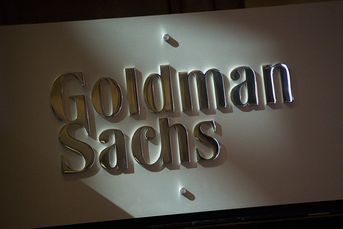Bond ETFs posted a good start to 2014, though March showed its lion’s side
Surprising comments by Fed chief Janet Yellen on rate hikes gave bond markets a bad scare.
The first quarter of 2014 saw equities change course from the torrid returns they posted last year, and rising interest rates in 2013 gave way to falling yields for 2014 — so far. Starting the new year, market observers generally expected a correction to equity prices at some point, although unsettling headlines from key emerging markets such as China and Brazil and disappointing economic activity at home accelerated the softening.
Unusually cold weather was widely blamed for lax economic data for January and February, but late in the quarter we heard that the fourth-quarter 2013 real gross domestic product growth was revised higher — from 2.4% to 2.6%, which lifted equities and weighed on many bond types. But the bond markets had a particularly bad scare in mid-March when new Federal Reserve Chairman Janet Yellen, in an attempt to sound soothing and familiar to journalists, instead sparked concerns that the Fed would begin raising rates much sooner than expected. Many bond exchange-traded funds traded lower in March, but not before posting a good start for 2014.
The top-performing fixed-income ETFs in the first quarter tended to come from the long-duration Treasury and high-yield municipal-debt groups. The quarter’s top performer, Pimco 25+ Year Zero Coupon U.S. Treasury Index ETF (ZROZ), boasted a 14.05% quarterly return. Like many bond funds, it got off to a fast start, jumping 11.21% in January before coasting through February and fighting through a shaky market in March. A lesser performer but more closely watched (it has assets of $3.2 billion versus ZROZ’s $77 million), iShares 20+ Year Treasury Bond ETF (TLT) gained 7.7% for the first quarter. Both products benefited from a 40-basis-point drop in the 30-year Treasury bond’s yield, which ended the quarter at 3.56%. At the other end of the yield curve, the two-year note missed out on the rally as it saw its yield float close to year-end 2013 levels, until the previously mentioned speech from Ms. Yellen prompted yields to rise substantially in one day — from 0.36% to 0.47%. At the very short end, SPDR Barclays 1-3 Month T-Bill ETF (BIL) lost 1 or 2 basis points each month of the quarter.
Municipal-debt ETFs rode the coattails of Treasuries for some of their best performance in many quarters. Market Vectors High-Yield Municipal Index ETF (HYD) flourished with the risk-on sentiment shift, gaining 4.63% for its best quarterly return in two years. Investors watched $3.1 billion iShares National AMT-Free Muni Bond ETF (MUB) gain 3.33% in the first quarter, although concerns that muni performance had seen its best days for a while were raised as the quarter came to an end and March returns clocked in at just 0.05%.
Core Bond ETFs and Core Plus Bond ETFs had positive quarters, but most funds in the groups seemed to fall down in March. With $16.2 billion, iShares Core Total U.S. Bond Market ETF (AGG) held on for a first quarter return of 1.87%, but it was among those feeling the tide turning at quarter’s end: March’s performance was down 0.19%. Bond fund guru Bill Gross managed to avoid the letdown in his product, Pimco Total Return ETF (BOND), which eked out 8 basis points of March performance and a quarterly return of 2.19%.
But some the most surprising performance was left to emerging-markets-bond ETFs. Industry heavyweight iShares JPMorgan USD Emerging Markets Bond ETF (EMB) stumbled out of the gate in January, reporting a loss of 0.96%. Fortunately for EMB investors, an especially strong February (+3.38%) and a remarkable bounce in March (+1.21%) seemed to bode well for a good start to the second quarter. That was more than could be said for the quarter’s worst performer, which also happened to be an emerging-markets-bond product: PowerShares Chinese Yuan Dim Sum Bond Portfolio (DSUM). Unlike EMB, this ETF’s bonds are denominated in Chinese yuan, and investors have had a “dim view” of local-currency bonds for the past few months.
Jeff Tjornehoj is head of Americas research at Lipper Inc.
Learn more about reprints and licensing for this article.








